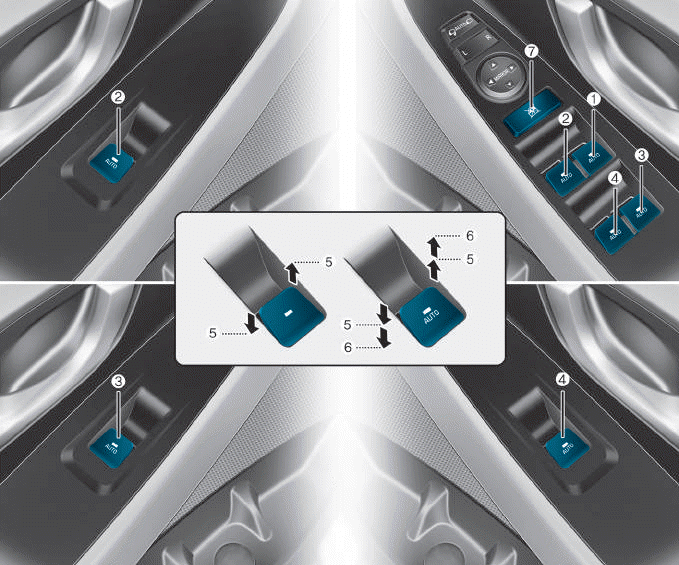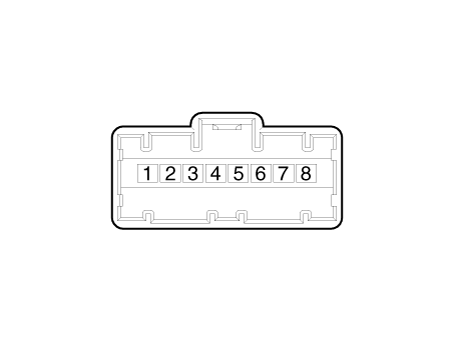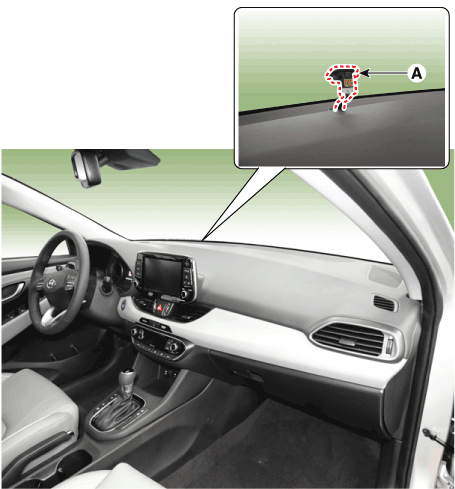Hyundai i-30: Air Conditioning System / Photo Sensor
Description and operation
| Description |
The photo sensor is located at the center of the defrost nozzles.
The photo sensor contains a photovoltaic (sensitive to sunlight) diode. The
solar radiation received by its light receiving portion, generates an electromotive
force in proportion to the amount of radiation received which is transferred
to the automatic temperature control module so that the solar radiation compensation
will be performed.
Repair procedures
| Inspection |
| 1. |
Turn the ignition switch ON.
|
| 2. |
Connect the GDS.
|
| 3. |
Emit intensive light toward the photo sensor using a lamp, and check
the output voltage change.
|
| 4. |
The voltage will rise with higher intensive light and reduce with lower
intensive light.
|
| Replacement |
| 1. |
Disconnect the negative (-) battery terminal.
|
| 2. |
With a flat-head screwdriver, remove the photo sensor (A) from the center
of the defrost nozzle after disconnecting the connector (B).
|
| 3. |
To install, reverse the removal procedure.
|
 In-car Sensor
In-car Sensor
Description and operation
Description
The In-car air temperature sensor is built in the heater & A/C control unit.
The sensor contains a thermistor which measures the temperature of the inside...
 Ambient Temperature Sensor
Ambient Temperature Sensor
Description and operation
Description
The ambient temperature sensor is located at the front of the condenser and
detects ambient air temperature...
Other information:
Hyundai i30 (PD) 2018-2025 Service Manual: Fuel Pump Motor
Repair procedures Removal 1. Remove the fuel pump. (Refer to Fuel Delivery System - "Fuel Pump") 2. Disconnect the fuel pump motor connector (A) and the fuel sender connector (B)...
Hyundai i30 (PD) 2018-2025 Owner's Manual: Interior overview
1. Inside door handle 2. Driver position memory system 3. Outside rearview mirror folding 4. Outside rearview mirror control 5. Power window lock switch 6. Power window switches 7. Headlight levelling device 8. Instrument panel illumination control switch 9...
Categories
- Manuals Home
- 3rd Generation i30 Owners Manual
- 3rd Generation i30 Service Manual
- LKA system operation
- To activate the ISG system
- Drive mode integrated control system
- New on site
- Most important about car
Power windows

(1) Driver’s door power window
switch
(2) Front passenger’s door power
window switch
(3) Rear door (right) power window
switch
(4) Rear door (left) power window
switch
(5) Window opening and closing
(6) Automatic power window
(7) Power window lock switch
Copyright © 2025 www.hi30.net


